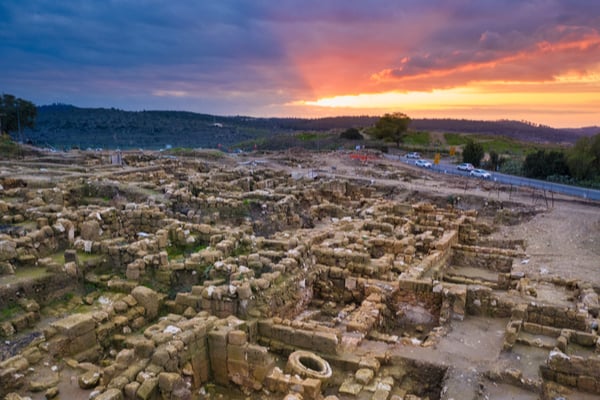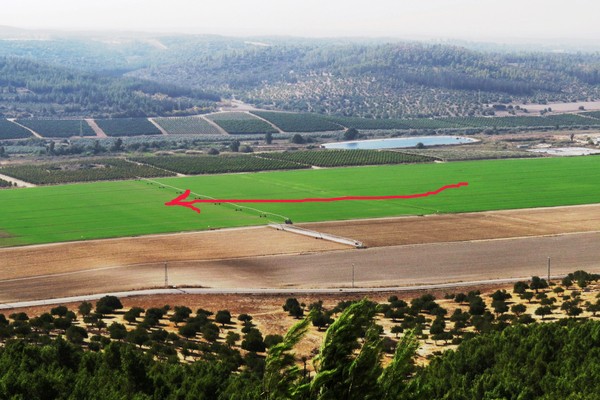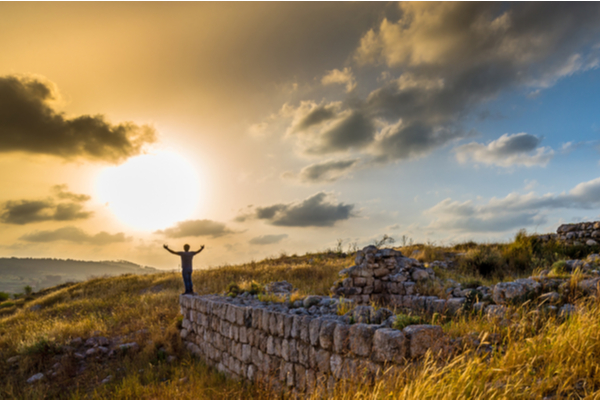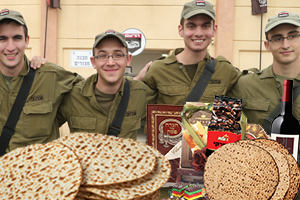
The story of Beit Shemesh did not begin in modern times, but in the Bible.
By Nosson Shulman, Licensed Tour Guide
“They placed the ark of G-d onto the wagon…. The Cows set out on the direct road…. to Beit Shemesh (1 Samuel 11: 11-12)”
I live in Beit Shemesh, which is Israel’s fastest growing city. In 1995 this sleepy town had only 17,000 residents, today the population stands at 130,000. Based on construction and demand, in seven years this number is expected to increase to 250,000. From every vantage point, one can see new neighborhoods being built on the horizon
The majority of Beit Shemesh’s residents are observant Jews. Olim (immigrants) from English countries like the U.S., Canada and U.K. make up a sizeable part of its population. In some of the neighborhoods English, rather than Hebrew, is actually the more dominant language.
Beit Shemesh was founded in the early days of the State of Israel. It has grown to become an amazing place to raise a large family, with beautiful parks, great schools, many synagogues, and a low crime rate. However, the story of Beit Shemesh did not begin in modern times, but in the Bible.
Beit Shemesh can be translated as “The House of the Sun”. Originally a Canaanite city, the city got its name from its inhabitant’s worship of the sun.
Tel (Hebrew for archeological mound) Beit Shemesh is literally across the street from the outskirts of the modern city.
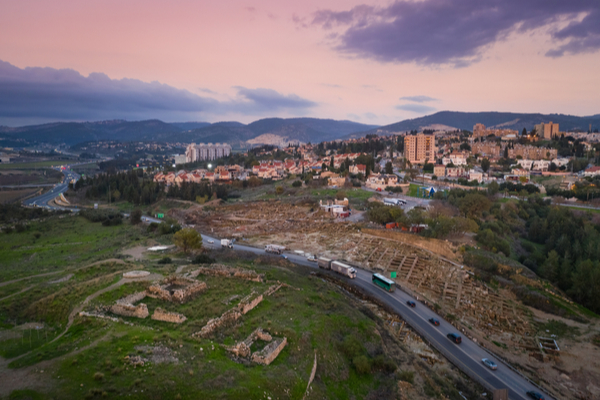
Tel Beit Shemesh in the foreground with the outskirts of the modern city in the background. (Shutterstock)
Beit Shemesh was conquered in the days of Joshua. Situated on the border between the tribal territories of Dan and Judah (Joshua 15:10), it was one of the 13 cities given to the Kohanim (i.e. Priests who serve in the Temple) as an inheritance (Joshua 21:15).
The most well-known story connected to Beit Shemesh involved the holy Ark of the Covenant, which had rested in the Tabernacle of Shiloh for 369 years.
The Ark was stolen by the Philistines and brought to Ashdod. While there, the residents of the city were struck with extremely painful stomach ailments while the statue of their idol Dagon was found destroyed in its temple.
Realizing that God might not be happy with their city possessing the Ark, they sent it to Gath, another Philistine city. When its inhabitants were smitten with similar results, it was then sent it to Ekron, where the same occurred.
At this point, the Philistines understood that perhaps G-d did not want any Philistine city to host the Ark.
To test whether the previous afflictions were indeed divine retribution or merely a coincidence, the Philistines put the Ark on a wagon pulled by two cows, and placed them on the biblical route of Nachal Sorek. If the cows headed towards Beit Shemesh, a Jewish city, they would take it as a sign that G-d wanted them to return the Ark to the Israelites.
This is, of course, exactly what happened.
When the Ark arrived at Beit Shemesh, its residents “Were reaping the wheat harvest in the (Sorek) valley, when they…saw the Ark, they rejoiced to see it (1 Samuel 6:13).” But then all of a sudden, G-d brought a plague that struck down many residents of the city because they “Peered into the Ark of G-d”. This was something they should not have done at their spiritual level.
According to Jewish belief, the higher one is spiritually, the more G-d expects of him. While gazing at the ark in that manner may have been overlooked for most, the people of Beit Shemesh knew better at their level, and were thus judged harshly. Indeed, one can see the contrast between the Philistines who wanted to rid themselves of the Ark which was “causing” them havoc to the people of Beit Shemesh, who didn’t blame the Ark but themselves saying “Who can stand before God?”
Instead of ridding themselves of the Ark, they sought a different, more suitable host for it and sent emissaries to the Jewish town of Kiriath-Jearim, whom they deemed more worthy to come and take it from them.
In 2007, the most impressive find on the tel was discovered. Some bored teenagers took a camera, tied it to a string and put it inside a hole in the ground and took pictures. Unwittingly, they had just found the largest water system ever found in Biblical Israel (outside of Jerusalem).
Since there were no springs in the city and the closest springs were too far for everyday use, almost all of their drinking water was supplied by rainfall. Because every drop of rain was vital for their survival, all of the roofs had a system of pipes which would channel the water to the cistern so as not to waste anything.
About 1,500-year ago, the Byzantines built a large monastery which serviced Christian pilgrims to the Holy Land. Since then, the city was largely abandoned until modern times.
Beit Shemesh is relatively close to the hotels of Tel Aviv and Jerusalem. There are also many other incredible sites in the area, which can be visited on the same day. The next time you are in Israel, request that this wonderful Biblical treasure be on your itinerary!
Nosson Shulman is a journalist and Licensed Tour Guide in Israel specializing in Biblical tours. To allow tourists to experience Israel during the Corona era, he created the new hit Israel tour video series, which brings Israel to the home of viewers by simulating actual tours. To check out his free sneak preview tour videos, click here. To view sample tour itineraries or to inquire about private tour opportunities with a personalized itinerary on your next trip to Israel, click here.
Send Passover Packages to Needy Israeli Soldiers - Bring Them Joy!
We are honored to thank the young men and women of the IDF who risk their lives every day to protect the citizens of Israel. Since October 7th, soldiers have been on the battlefield for months - many are hoping to come home for Passover.
Join us in sending Passover food packages (and personal notes) to Israeli soldiers and their families.
Many soldiers spend the Passover holiday with needy families back home. The soldiers greatly appreciate your love and concern. Bring them Passover joy!
CLICK HERE TO SEND YOUR PACKAGE AND NOTE TO ISRAELI SOLDIERS!
